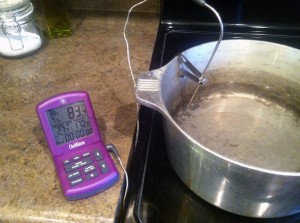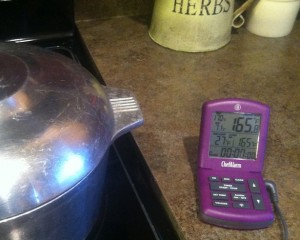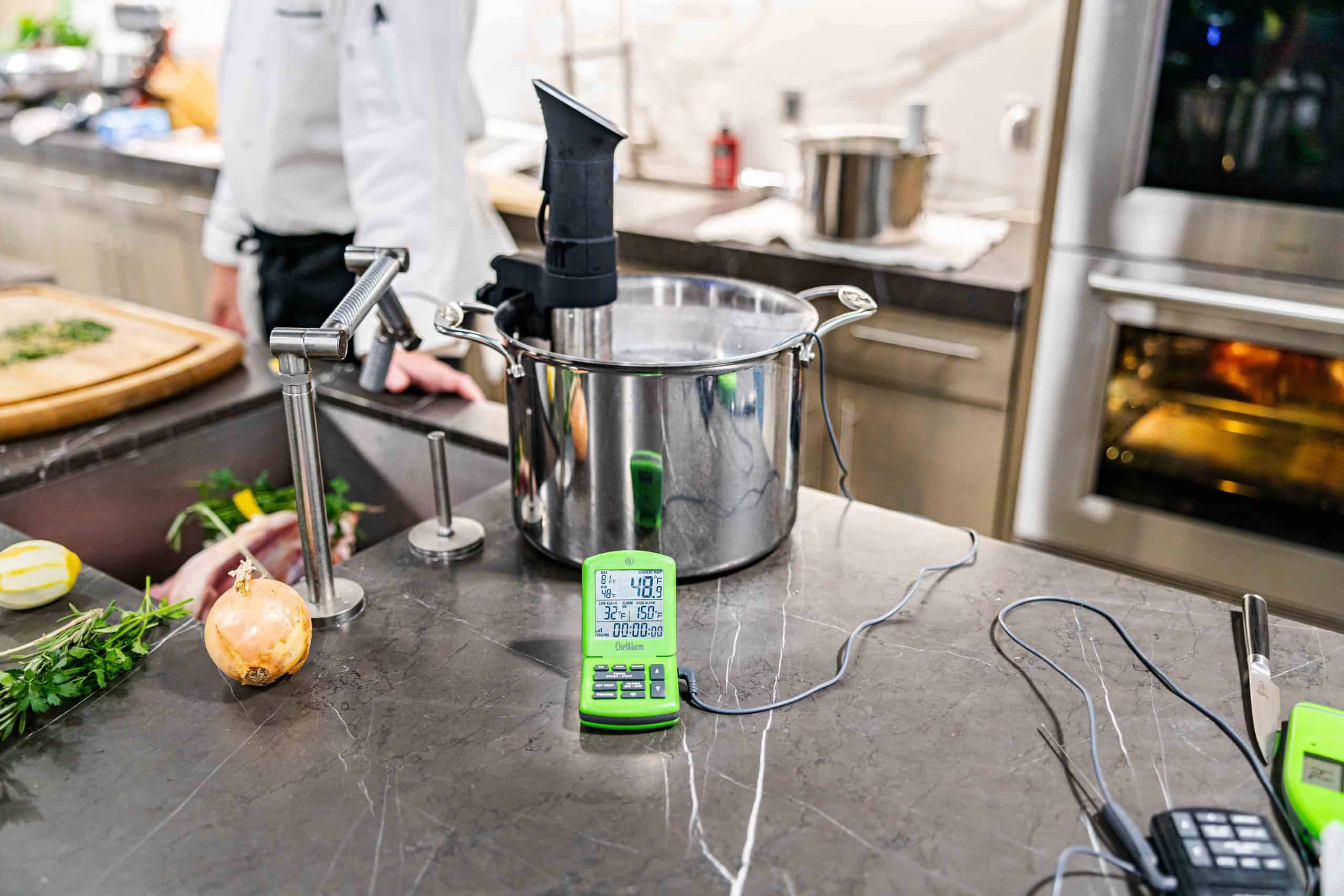Thermal Secrets to Moist and Flavorful Chicken Salad
Great chicken salad starts with chunks of moist and flavorful chicken. Each piece cooked evenly throughout to a perfect food safe temperature. Tender. Savory. Juicy.
While there are several ways you can prepare chicken for a salad (e.g. grilling, baking, pan searing and poaching), we’ve found that your best bet for achieving tender, white and juicy chicken is a technique that mimics sous vide, which coincidentally is the preferred method employed by the chefs at America’s Test Kitchen. Other methods may add color or flavors, but often result in chewy, overcooked bits of chicken.
Similar to the French sous vide technique, wherein food is placed in vacuum sealed bags and cooked in a water bath where temperature is closely monitored, this method utilizes a water bath, but does not require vacuum sealed bags. It’s an easy solution for kitchens that aren’t equipped with vacuum sealers and immersion circulators.
The advantages of cooking sous vide include even cooking from surface to center, precise regulation of temperature, and the ability to repeat the results time and again. Repeatability is easy because of temperature equalization. The internal temperature of your meat will never get hotter than your water bath. It’s a fool proof method to ensure you never overcook your chicken.
Follow the simple steps below and you’re guaranteed tender, juicy chicken – every time!
Start by filling a pot with six cups of water (room temperature works best). Dissolve two tablespoons of salt and submerge four chicken breasts. Heat over medium-high heat until the water reaches 170°F.

Once at 170°F, remove the pot from the heat, and cover. America’s Test Kitchen recommends letting the pot sit (covered) for 15-17 minutes until the chicken has reached 165°F. We prefer to monitor the internal temperature of the chicken as it rises.
Using the Pro-Series Needle probe with the ChefAlarm, select a piece of chicken as a reference and insert the tip of your probe into the center of the thickest part of the cut. Re-submerge the breast with the others and replace the lid. (The Pro-Series needle probe will be safe closed in the lid of the pot.) Re-set your high alarm to sound when the temperature reaches 165°F.
The new Pro-Series needle probe is protected by an immersible, mini-handle transition that seals the probe assembly against moisture so the probe still works in water baths and simmering pots. And with a cable that can withstand temperatures up to 500°F (for short periods), you can be sure that you’ll never burn it out at the low and slow temps characteristic of sous vide cooking.

Incorporate your perfectly cooked chicken with these ingredients from America’s Test Kitchen for what might be the best chicken salad you’re ever had: 1/2 cup mayo, 2 tablespoons lemon juice, 1 teaspoon dijon mustard, 2 celery ribs (minced), 1 shallot (minced), 1 tablespoon parsley (minced) and 1 tablespoon tarragon (minced)



